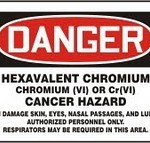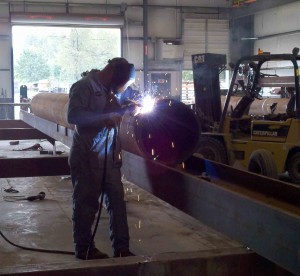Sat 18 Sep 2010
Hexavalent Chromium (Cr6)
Posted by admin under Hexavalent chromium, MSDS
[9] Comments
This post will be an attempt to describe the hazard of the heavy metal, hexavalent chromium.  The subject is confusing. It’s a technical subject, and I will try to make it simple to understand. If you have questions you can contact Julia Roberts, from the movie Erin Brockovich. (This was the one of the contaminants in the water in that movie/documentary)
The subject is confusing. It’s a technical subject, and I will try to make it simple to understand. If you have questions you can contact Julia Roberts, from the movie Erin Brockovich. (This was the one of the contaminants in the water in that movie/documentary)
Chromium is a metal found as chromium-3 (it’s valence) – and…if you remember from chemistry, the valence is the number of positive charged ions. The point: when chromium is heated, it “becomes” chromium-6, or hexavalent chromium. Hexavalent chromium will eventually go back to chromium-3. I believe the half-life is about 17 days (it takes 17 days for half of the material to convert back from cr6 to cr3). Here’s the confusing part: Chromium-6 isn’t harmful, but it is VERY able to be absorbed by your body (skin & membranes). Chromium-3 is harmful, but isn’t able to be absorbed by your skin.
So, here’s what happens:
- you have a material (or a product, ie. stainless steel, or look at your MSDS) with chromium-3 in it.

- you heat it up
- it turns into chromium-6 (hexavalent chromium)
- it absorbs into your body (breathe, drink, touch)
- it goes back to chromium-3
- you develop symptoms/disease
Symptoms might include:Â Â irritation or damage to nose/throat/lung, chrome ulcers (gross, huh?), lung cancer (if breathed), eye damage, allergic response (including dermatitis).
In construction we typically see exposures in these activities:
- Welding

- Stainless steel metal-work
- Painting- (as a pigment) or an anti-corrosion agent
- Hardfacing – applying weld-beads to the sides of loader buckets (see picture)
The risk of high exposure varies due to many factors including, type of work, ventilation, amount of chromium in the product, etc.
The CDC has some good information here.
Controls:Â As usual, it depends. However, as a general rule you should try and eliminate the hazard (use non-chrome materials, or add ventilation). If it is still of concern, use administrative controls (limit the time, make sure employees are following protocols). And, finally, personal protective equipment to control exposures. Proper respirators (with HEPA cartridges) and don’t forget skin protection (gloves, tyvek, etc.).

